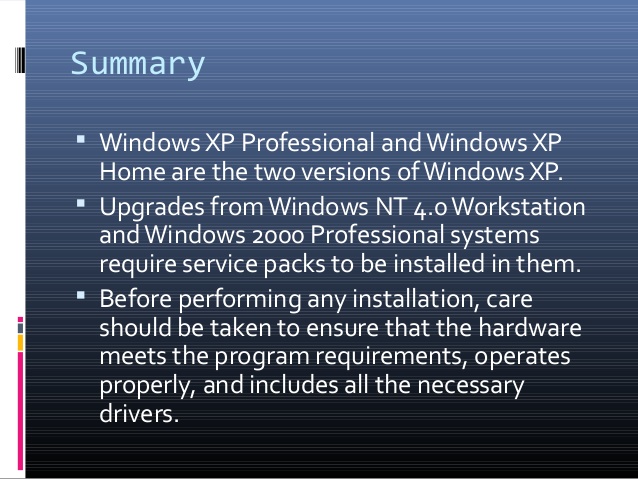Windows XP- Summary
Summary
Microsoft designed Windows XP to be an extensible, portable operating system —one able to take advantage of new techniques and hardware. Windows XP supports multiple operating environments and symmetric multiprocessing, including both 32-bit and 64-bit processors and NUMA computers.

The use of kernel objects to provide basic services, along with support for client-server computing, enables Windows XP to support a wide variety of application environments.
For instance, Windows XP can run programs compiled for MS-DOS, Windowsl6, Windows 95, Windows XP, and POSIX. It provides virtual memory, integrated caching, and preemptive scheduling.
Windows XP supports a security model stronger than those of previous Microsoft operating systems and includes internationalization features.
Windows XP runs on a wide variety of computers, so users can choose and upgrade hardware to match their budgets and performance requirements without needing to alter the applications they run.
Frequently Asked Questions
Recommended Posts:
- Operating System Concepts ( Multi tasking, multi programming, multi-user, Multi-threading )
- Different Types of Operating Systems
- Batch Operating Systems
- Time sharing operating systems
- Distributed Operating Systems
- Network Operating System
- Real Time operating System
- Various Operating system services
- Architectures of Operating System
- Monolithic architecture - operating system
- Layered Architecture of Operating System
- Microkernel Architecture of operating system
- Hybrid Architecture of Operating System
- System Programs and Calls
- Process Management - Process concept
